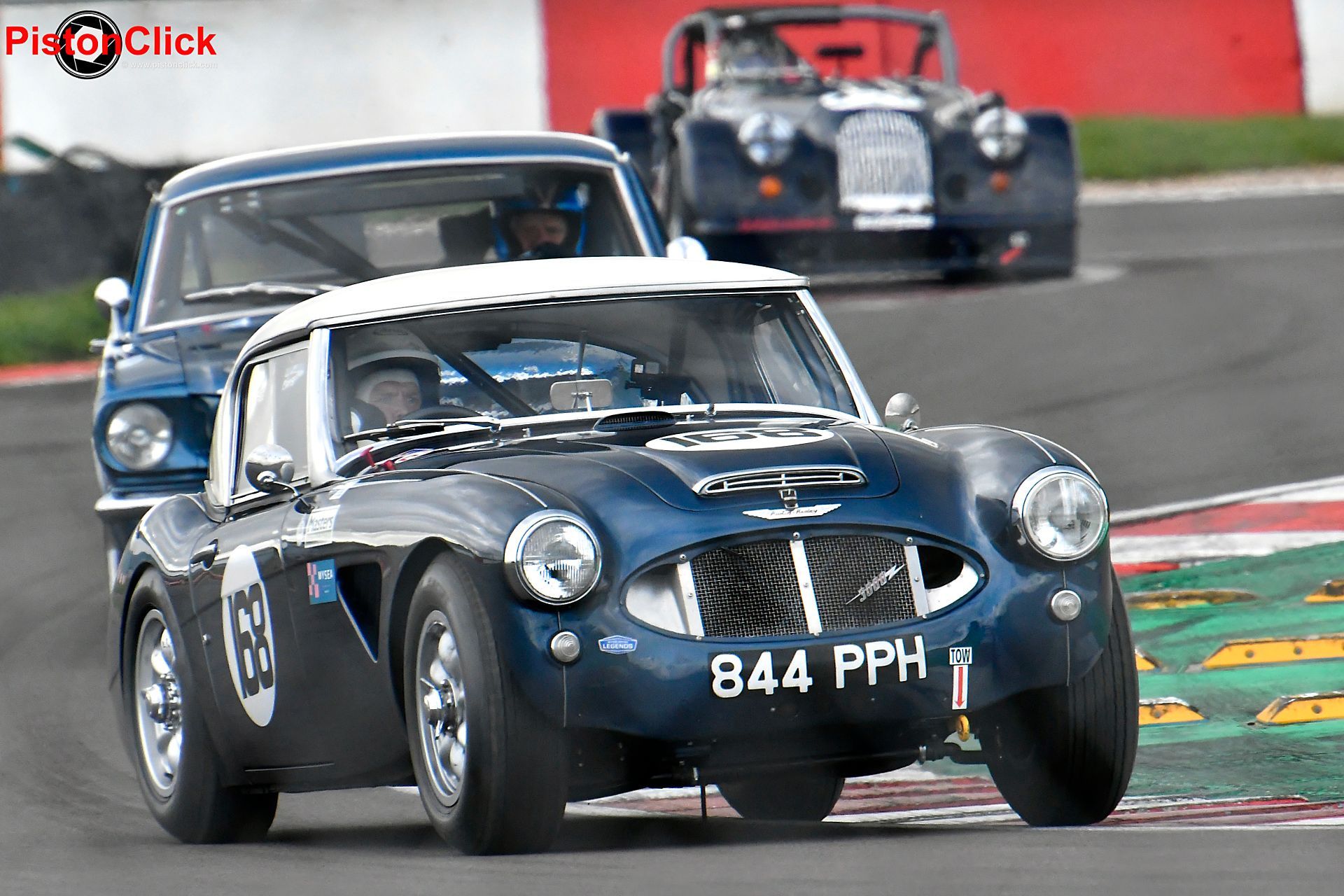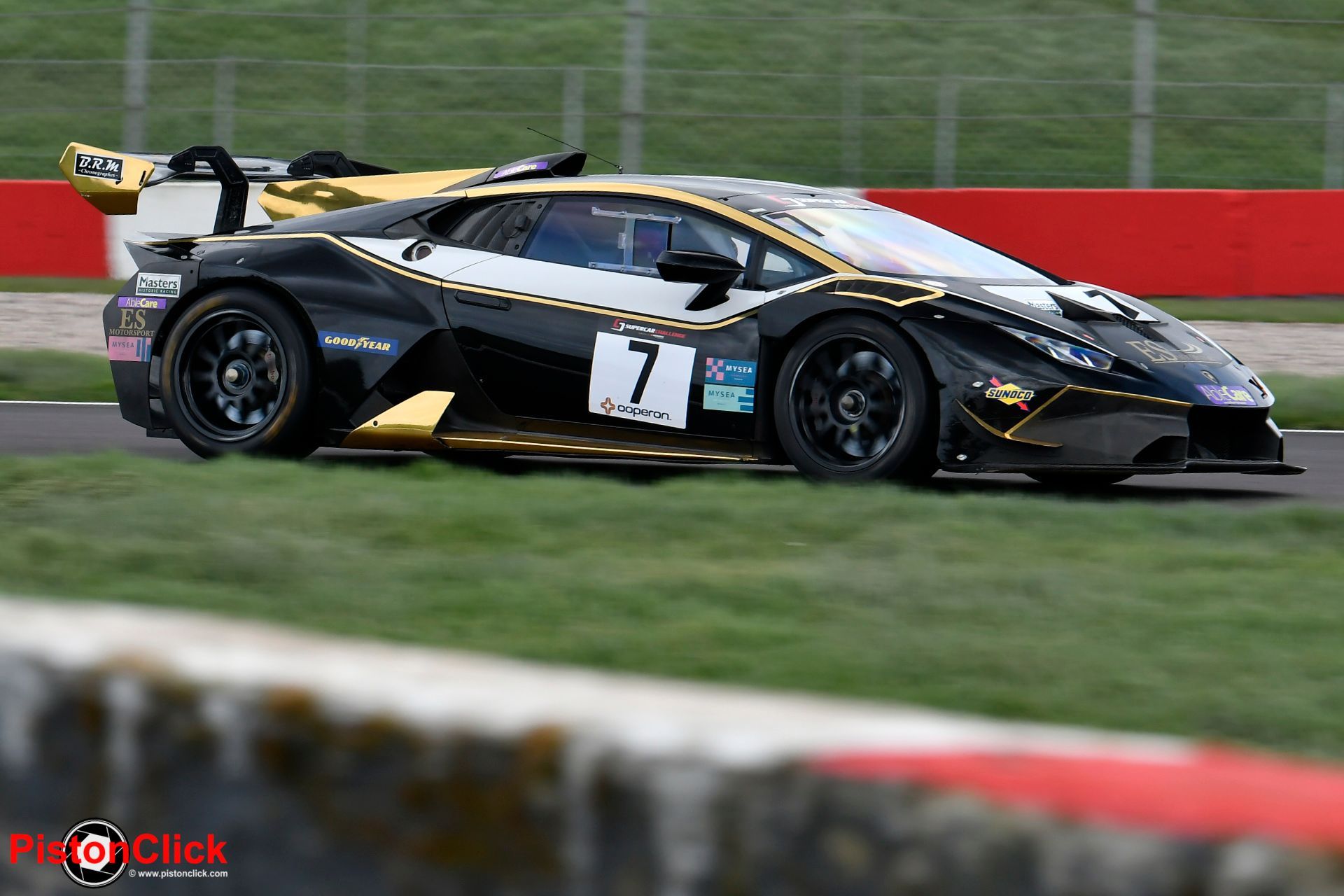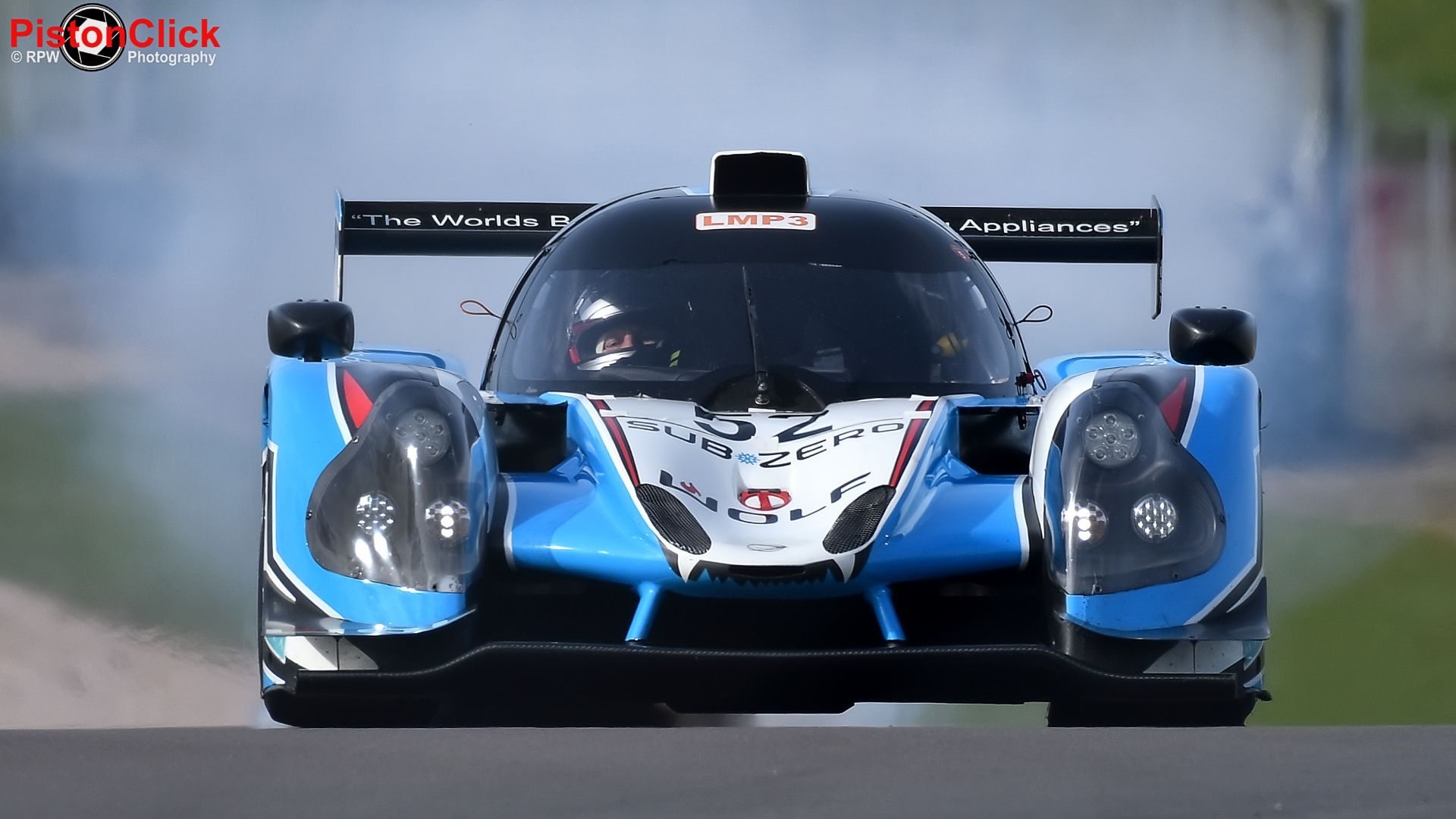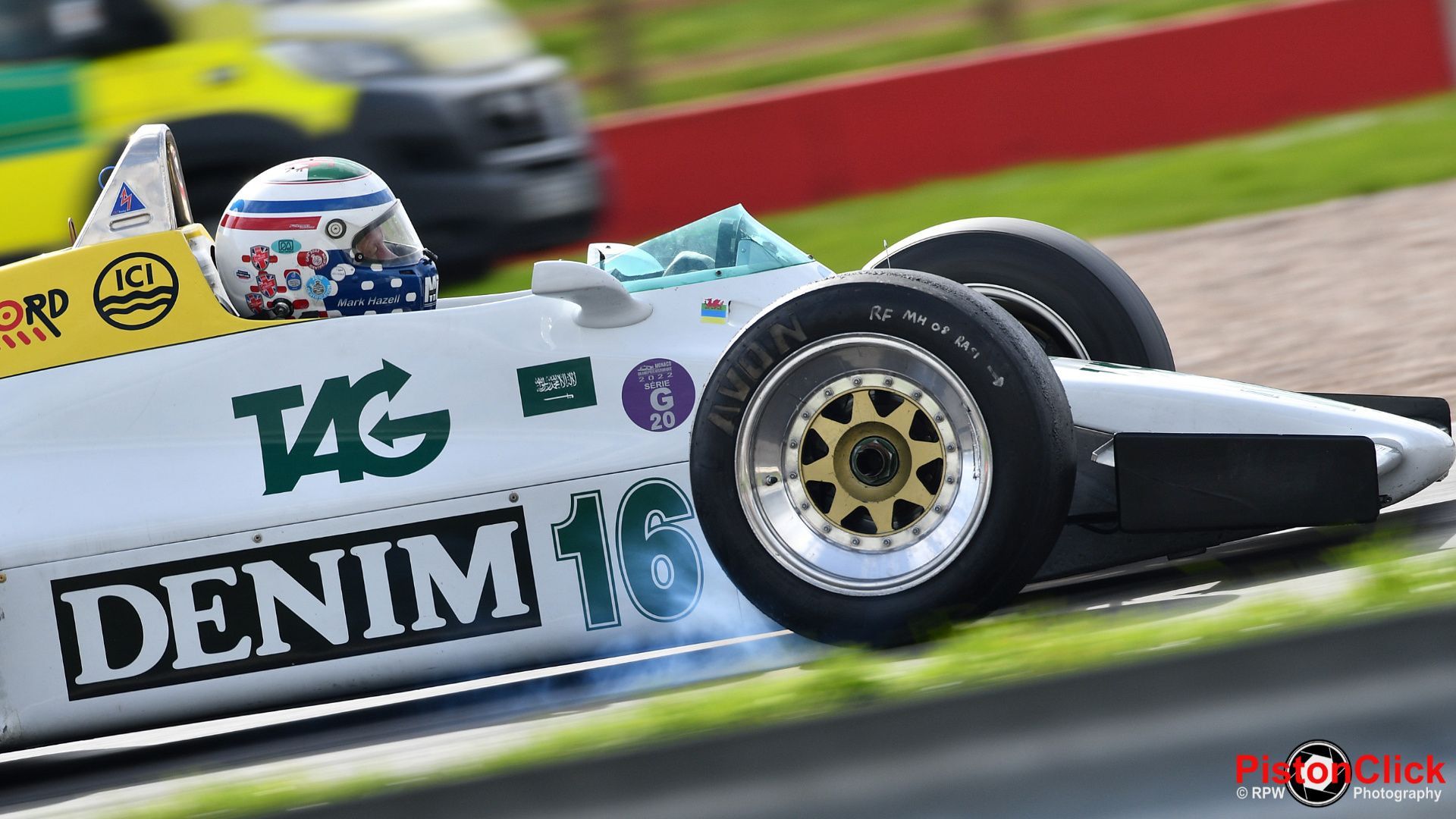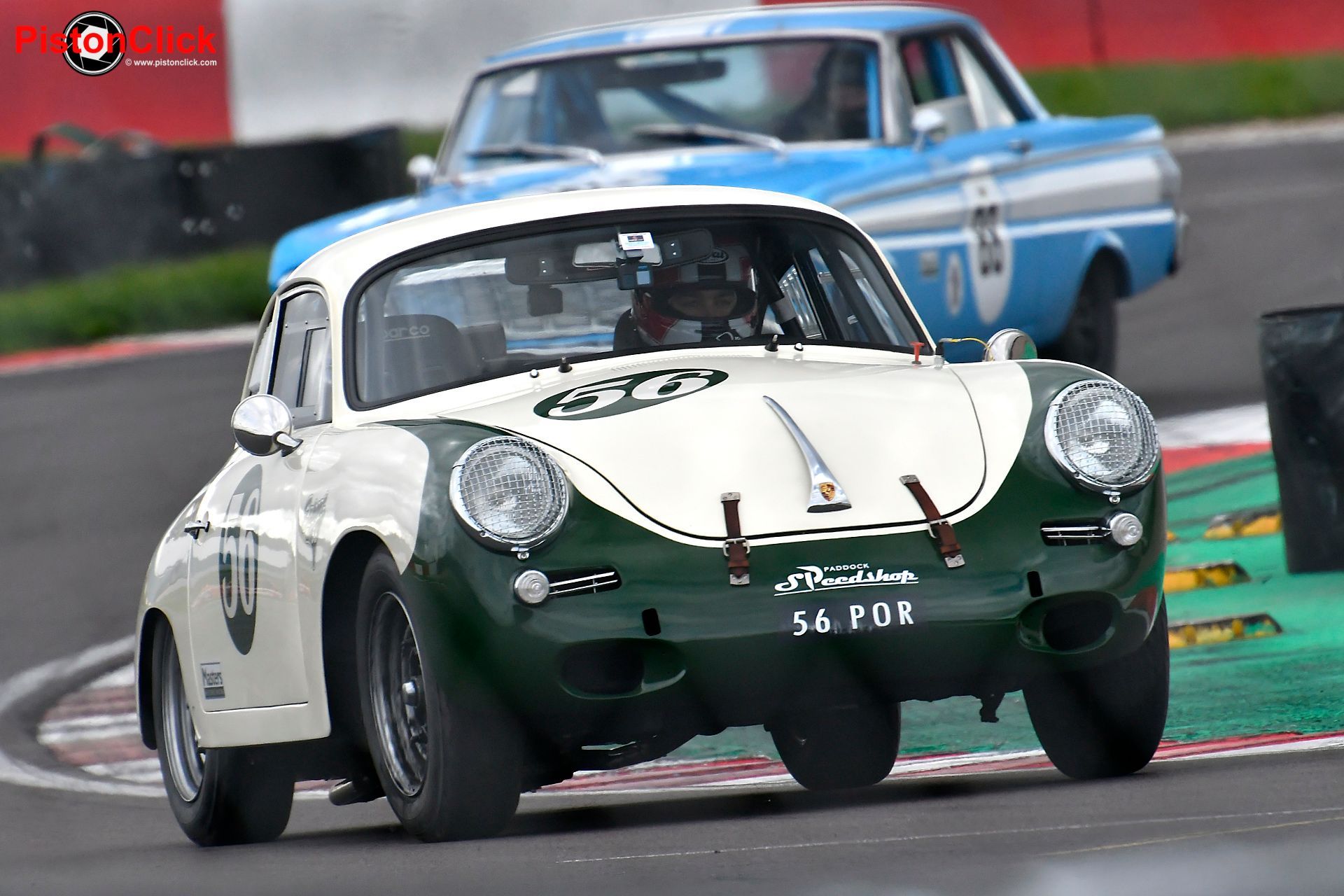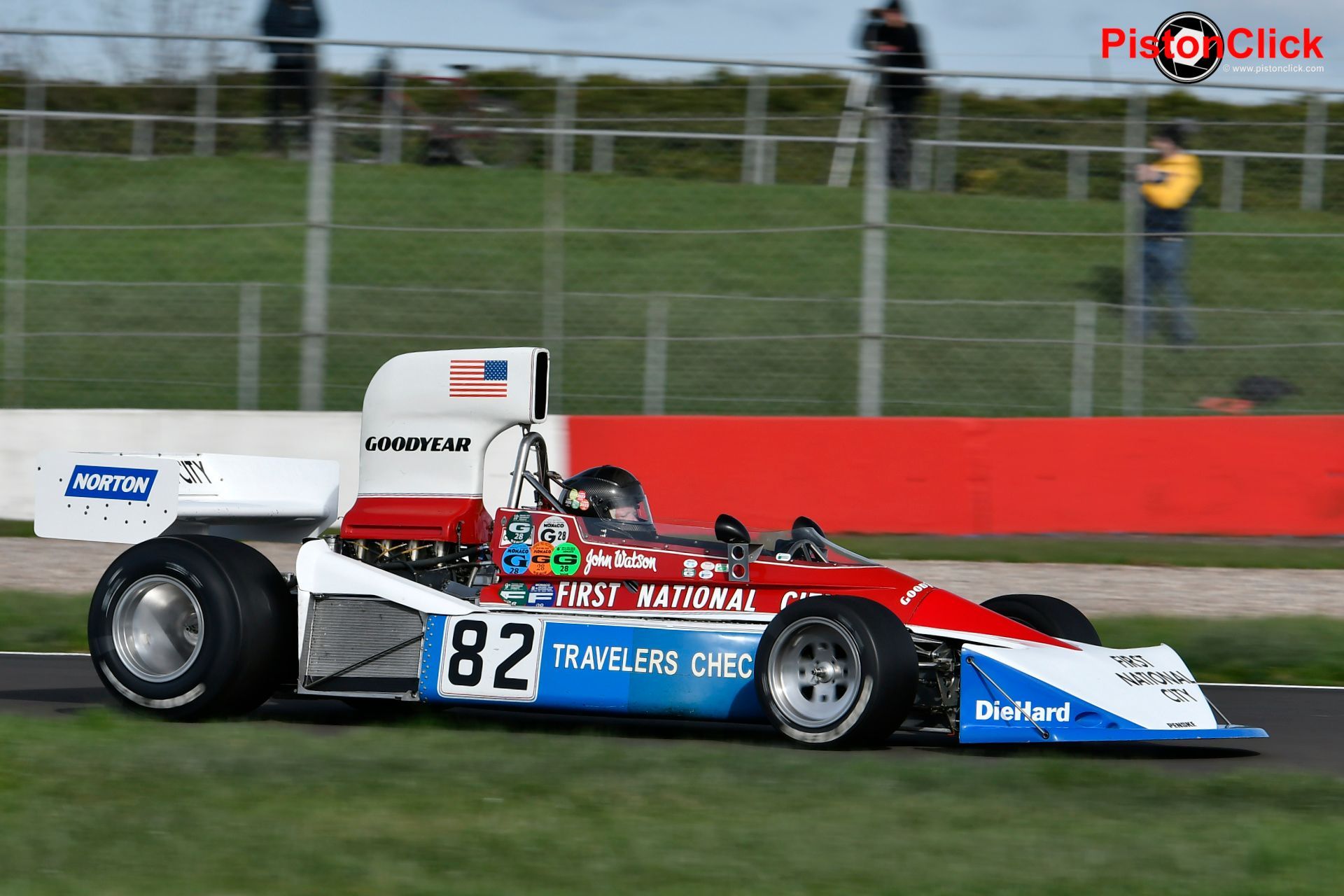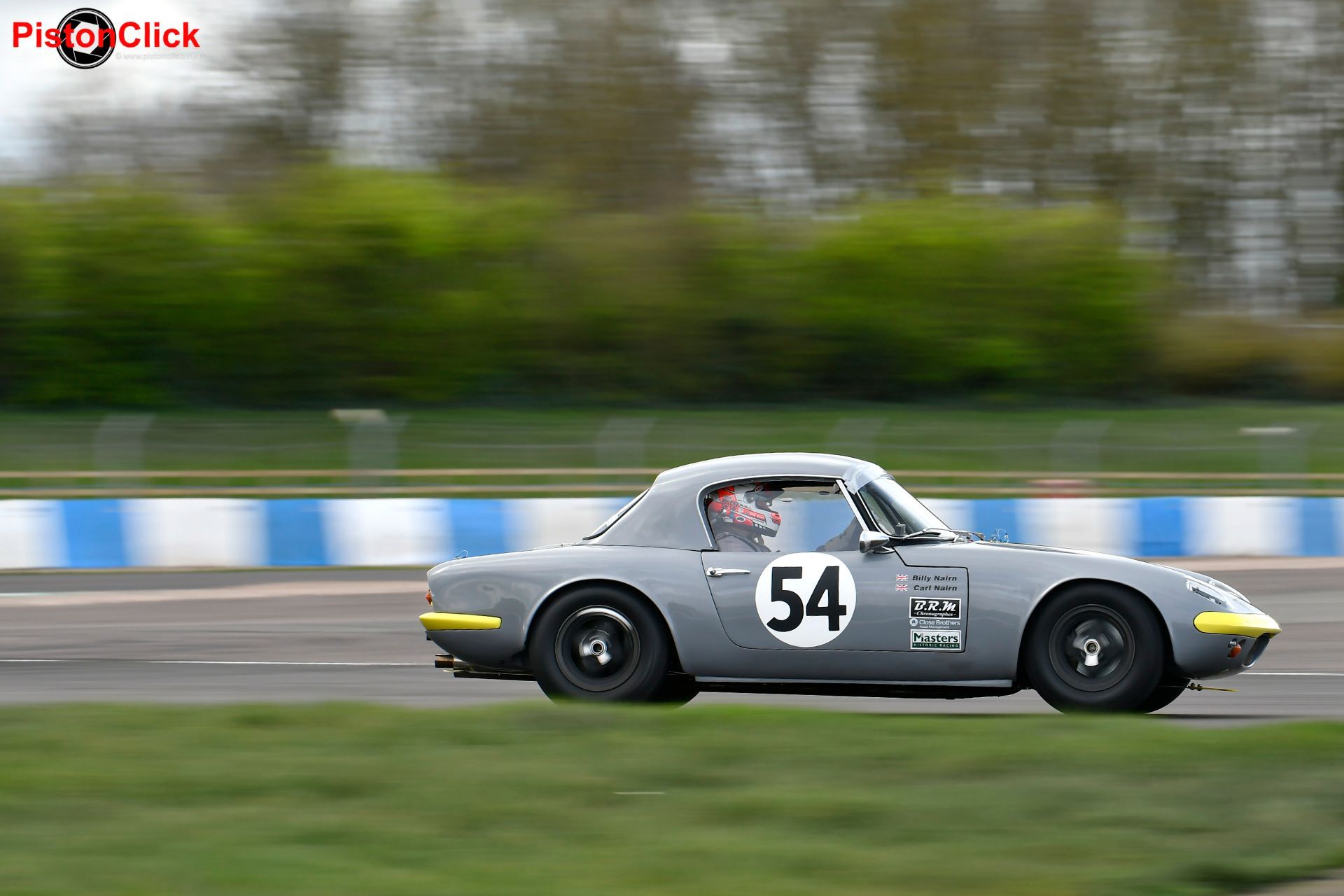
Masters Historic Racing Test Day 2024 - Donington Park - 19 March 2024
We are getting close to the start of the racing season here in the UK. The cars and bikes have been pulled out of their winter storage in preparation for the season ahead. Part of that preparation is testing, and that’s where the PistonClick team went last week. On a sunny Tuesday we went to photograph the Masters Historic racing test day at Donington Park.
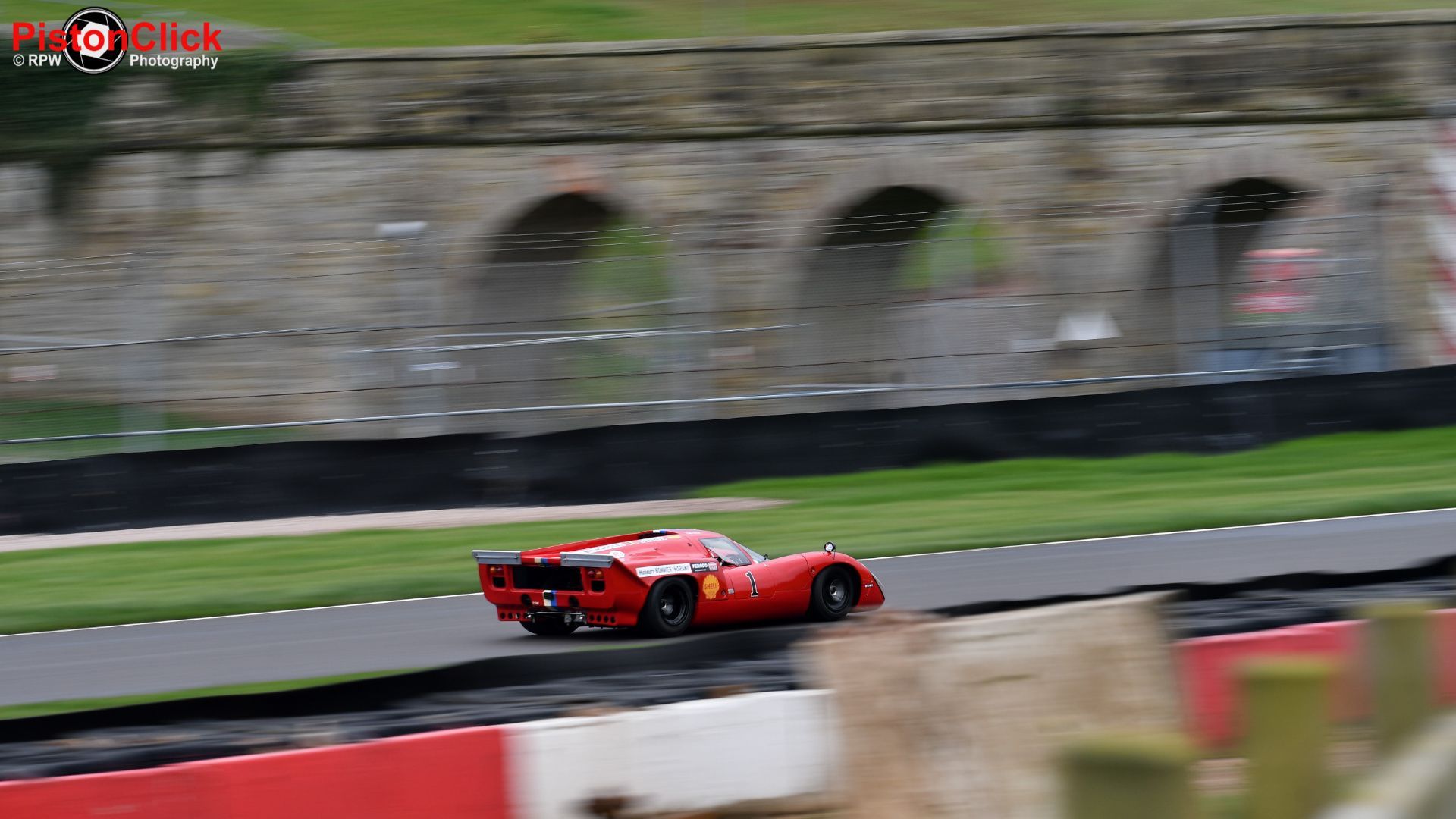
The Masters Historic racing ran three groups of cars during the day, Pre-66 GT and Touring Cars, Single seat and Sports cars. The sessions were 30 minutes long, which for the spectator photographer gave plenty of time to capture these great cars at a nice leisurely pace.
That’s one of the aspects of test days that I like, the no racing part. It sounds a little strange but bear with me.

On a race day you will get a few qualifying or warm up sessions which are usually quite short, then it’s the race. So for the spectator photographer you can be restricted to locations as you just don’t have the time to move and if you do, you can guarantee that the best spots for viewing and photography have been taken.
This can result in you capturing a lot of photos from the same angle. Great if that’s your thing and, looking at social media after an event, it is for some people. 200+ pictures from the same bend however, it is most definitely not my thing.
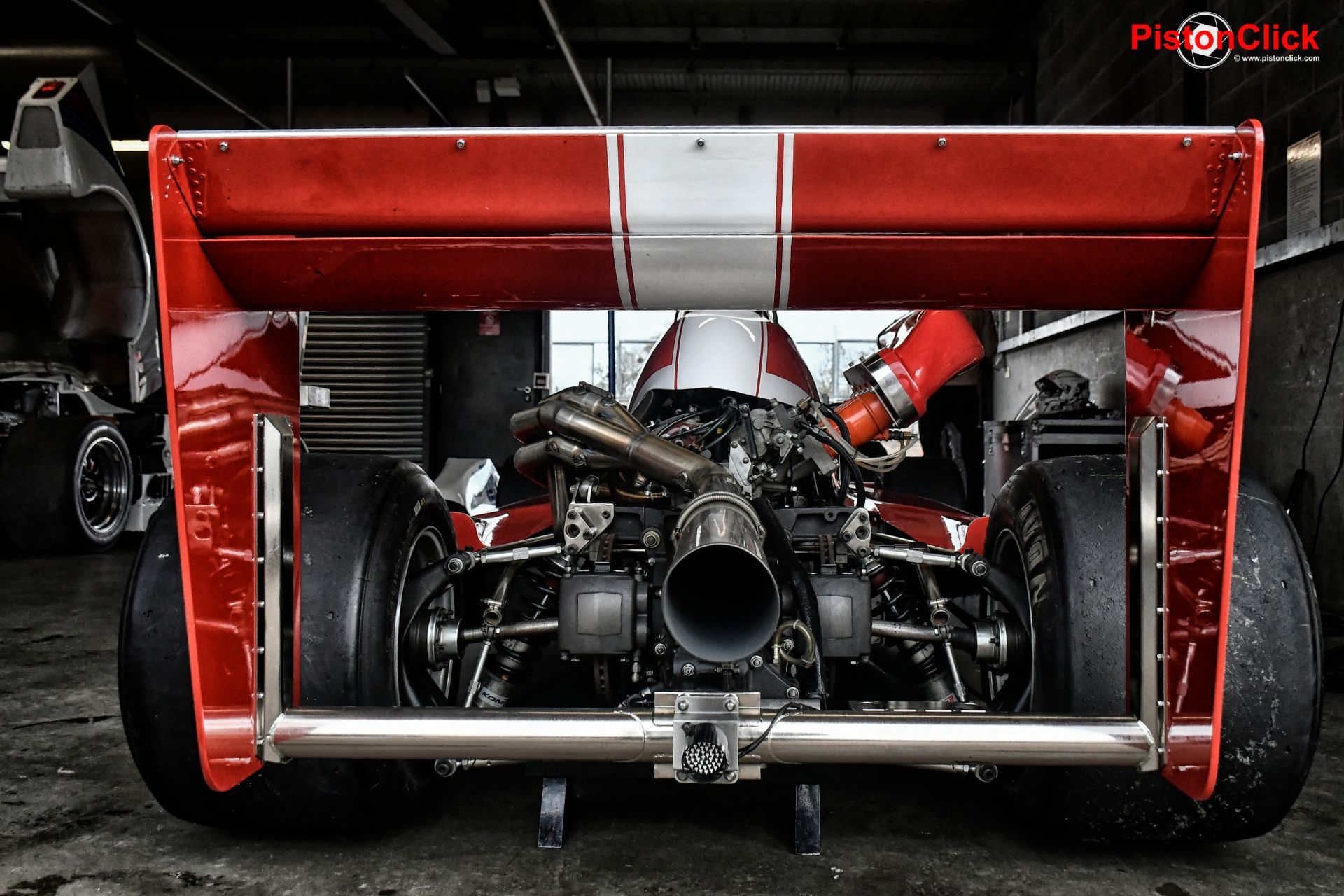
Variety is the spice of life they say so getting around a track and taking very different photos is what I like to do, and that’s why I love a test day.
Being mid week there are generally not many spectators, it’s free to get into the circuit and there are not the usual access restrictions in the pits and paddock. This means you can pick your spot and capture some great pictures.
The Masters Historic racing is one of the friendliest race series in the UK. I’m not saying others are unfriendly, but it’s a fact that with most of the other big events in the UK, the teams and racers are very focused and therefore will keep garage doors closed and restrict access as they prepare for the competition ahead.
The Masters Historic racing is quite different in this aspect. There is a genuine love of the cars that are racing in this series, and the owners and drivers are more than happy to chat about their cars. Most of the vehicles have quite an interesting history so they have a lot to chat about.
Also, from my viewpoint as a spectator photographer who has watched a few races in my time, I can tell when a racer is pushing a car to its limits and when they are not. So, although they are going racing, it seems to me to be more about the fun side of motorsport than the out and out competitive side.

The Masters is about getting historic cars where they belong, on track and not gathering dust in a museum. But I’m sure that in the back of the mind of all of the racers who take these iconic cars onto the grey stuff, is that the cars are unique and in some cases irreplaceable, so pushing them to the limit is probably not a good idea.
Don’t get me wrong there is racing and even on a test day there were battles breaking out, especially in the Pre-66 GT and Touring Cars class. Gary Pearson who owns and runs Pearsons Engineering, who restore classic cars for the road and prepare historic cars for the track, summed it up nicely. When asked if he did this for fun or for a win he said “It’s for fun, but it’s more fun when you’re at the front!”
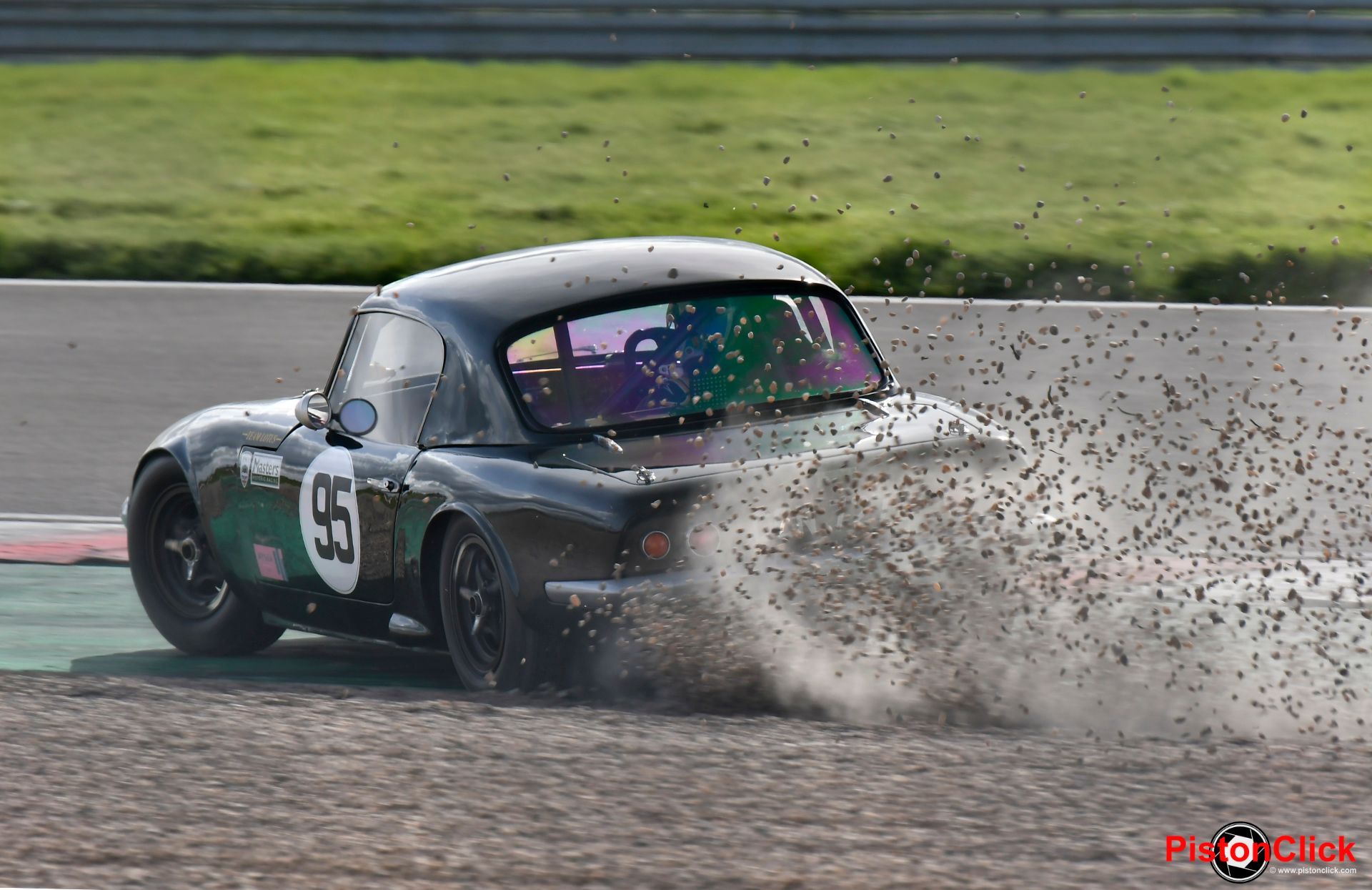
As I watched the three different groups of cars out on track I came to the conclusion the “racing element” is strong in the tin tops, Pre-66, Sports cars and Gentlemen driver, but less so in the Endurance Legends and even less in the Masters Racing Legends for 1966 to 1985 F1 Cars.
I’m not saying the F1 cars were not entertaining, far from it, they were the highlight of the day for me. The noise alone from these car is fantastic and they are very photogenic.
Having said that there was nothing out on track last Tuesday that I didn’t want to take a picture of, there were so many great cars. The Endurance Legends are not only great looking but sound amazing. Over the years I have taken some great pictures of these cars helped by the livery which seems to pop no matter what the weather is doing.
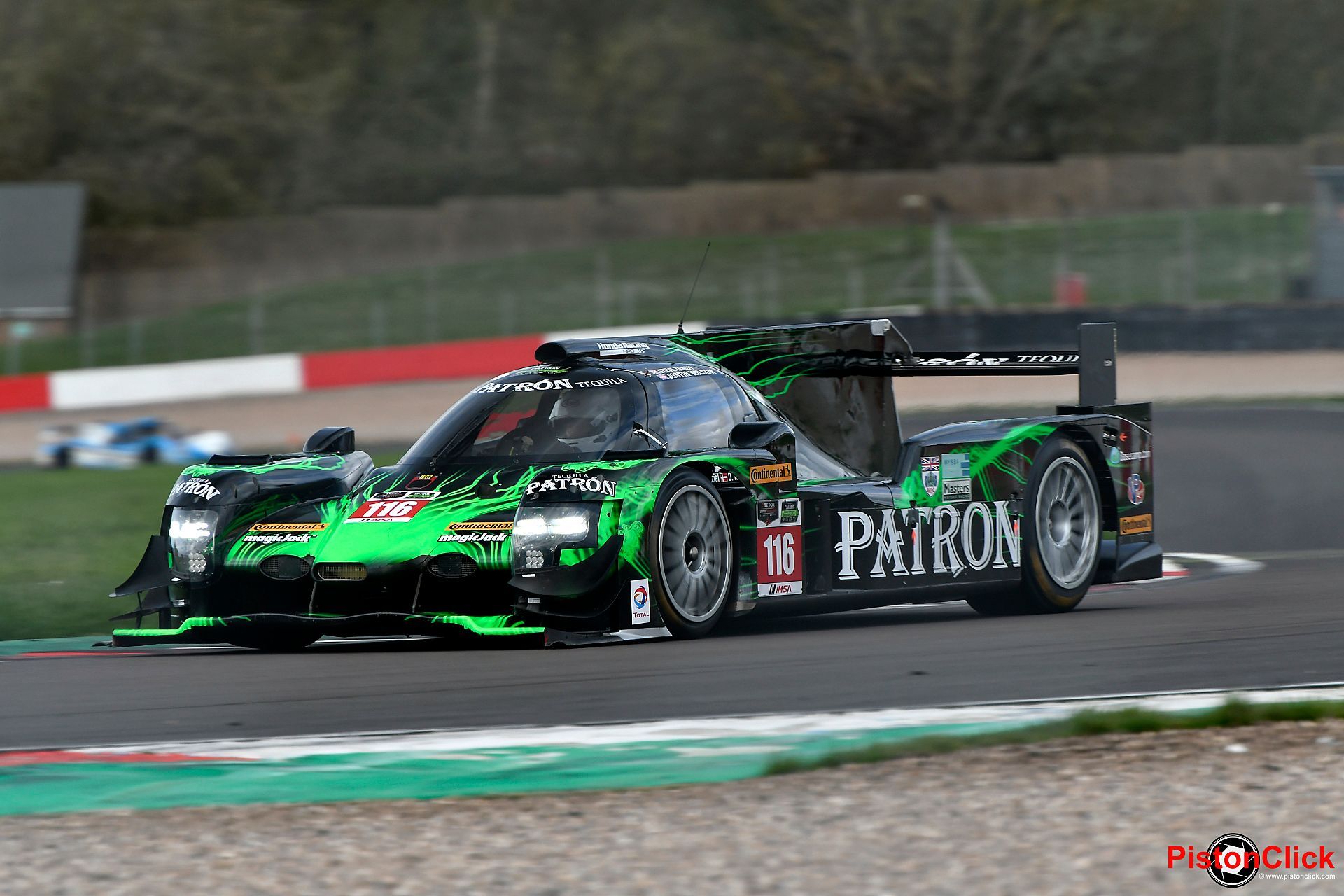
I am very much looking forward to seeing these cars later in the year. The Masters Historic racing are heading off to the South of France for the first official race of the year. The Circuit Paul Ricard will host the Masters for the KENNOL Grand Prix de France Historique race weekend.
The next UK event will be the 25 – 26 May 2024 at Brands Hatch for the Masters Historic Festival. The PistonClick team will be back at Donington to capture all of the action at the Masters Historic race weekend 3-4 August.
Photographic Post Script
For this event I used the Nikon D500 with a AF-S Nikkor 70-200mm f/2.8E FL ED VR and a 1.4 and 2.0 teleconverter for the track shots. The lens was swapped for the garage pictures to the AF-S DX NIkkor 18-140mm f/3.5-5.6G ED VR. My shooting buddy used the Nikon D500 with the Nikon 200-500mm superzoom.
As the cars were testing so was I; changing the auto focus modes to find the optimal settings for cars. As I take a lot of motorcycle shots I use continuous auto focus (AF-C) and a group of twenty five focus points that I will move to where I predict the rider’s helmet will be. This isolates a rider by focus, pushing the other riders out of focus. Panning also helps, blurring the other riders and optimising the image captured, emphasising the speed of the machines.

This setting is good but I have noticed that although my camera is capable of 10 frames a second it will not hit those speeds in normal use. This is due to the camera slowing down as it focuses. It is still fast but could be better. Also, in the AF custom settings menu, a1 on a Nikon menu I set “Focus” (other settings are focus and release, release and focus and so on) this stops the camera taking out of focus shots.
I don’t want out of focus shots so this mode slows the camera even more but I can guarantee a full card of sharp pictures, as long as I don’t screw up the panning.

One way to get those high speed bursts (I’m taking about two or a maximum three shots) is to turn the AF off which I do a lot for cars. I Pre-focus on the part of the track where I want to take the shot and make sure my aperture is around f8 to give plenty of depth of field. Then I pan with the car and take the shot.
I would recommend checking the focus after a shot or two, as long heavy lens can move as you drop the lens vertically to check the image on the back of the camera.

One other mode I have used well for cars is auto-area AF which uses 159 focus points. You select the start point. The camera automatically detects the subject and selects and moves the focus point.
In this mode priority is given to the faces of any portrait subjects detected. During the recent rallying assignment a lot of my pictures had the drivers’ faces super sharp. Top tip, using a polarising filter helps a lot to remove the reflections from the windscreen to achieve these kind of results.

I am going to continue testing the AF modes on the Nikon D500 as there are a lot of other factors that can affect the responsiveness of the camera. For example the lens used can dictate the number of focus points. This can reduce dramatically when you start to stop the lens down. Also, teleconverters have an effect, out of the 153 focus points only 99 cross sensors are available when using a teleconverter, add in a AF‑S NIKKOR 200–400 mm f/4G ED VR II and this reduces to 45. I will gather all of the data and produce a report with my findings.
So the takeaway from this report is that test days are not only great to get a good selection of images for your portfolio, but also good for your own photography testing.
Just because you get good results week in week out doesn’t mean you should be content - experimenting could help you produce even better images.
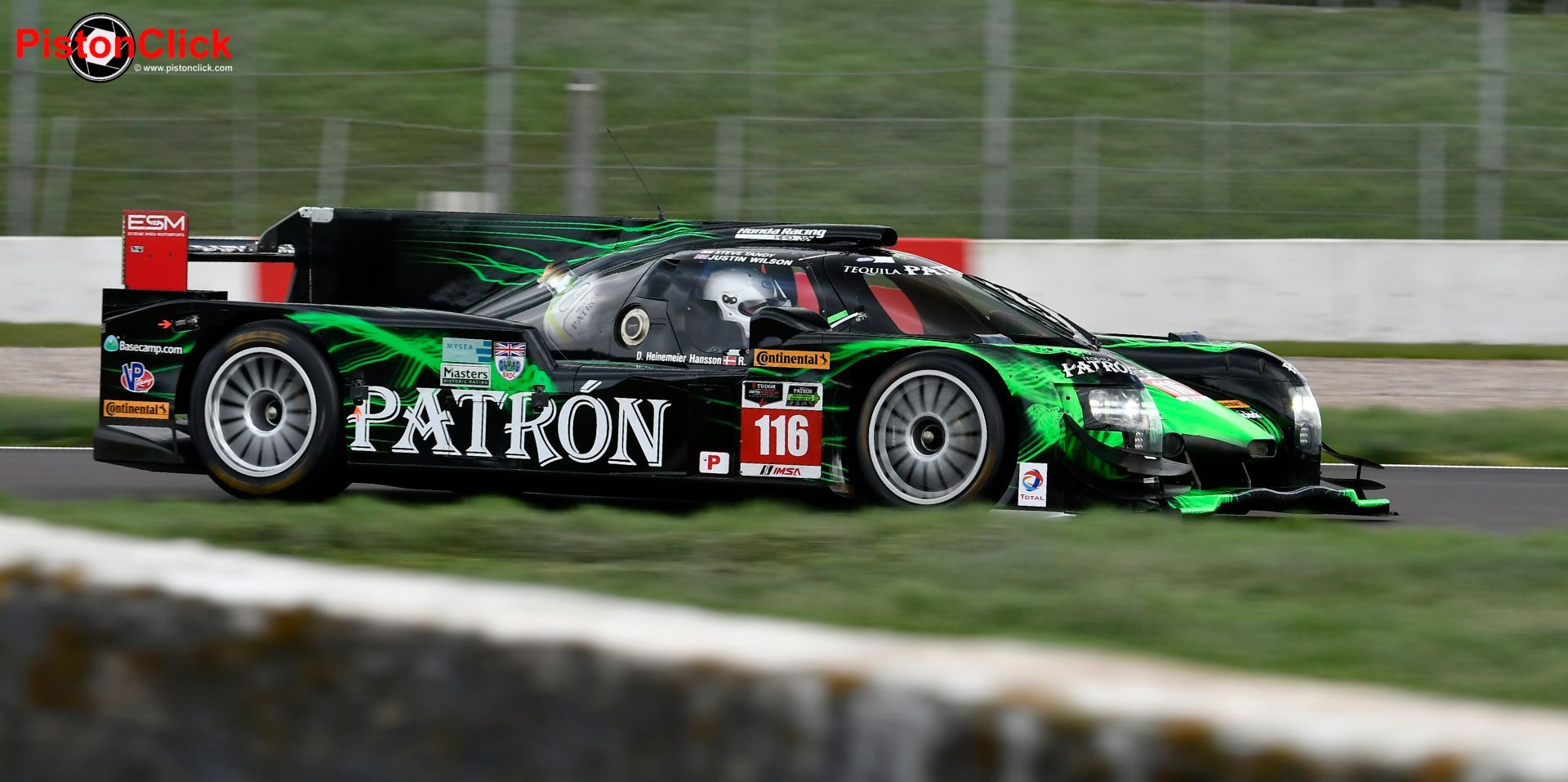
Thanks to RPW Photography for helping with this report which you can share with your friends on Social Media using these links.
Do you like taking photographs and writing a few words? Get in contact, we need you!











